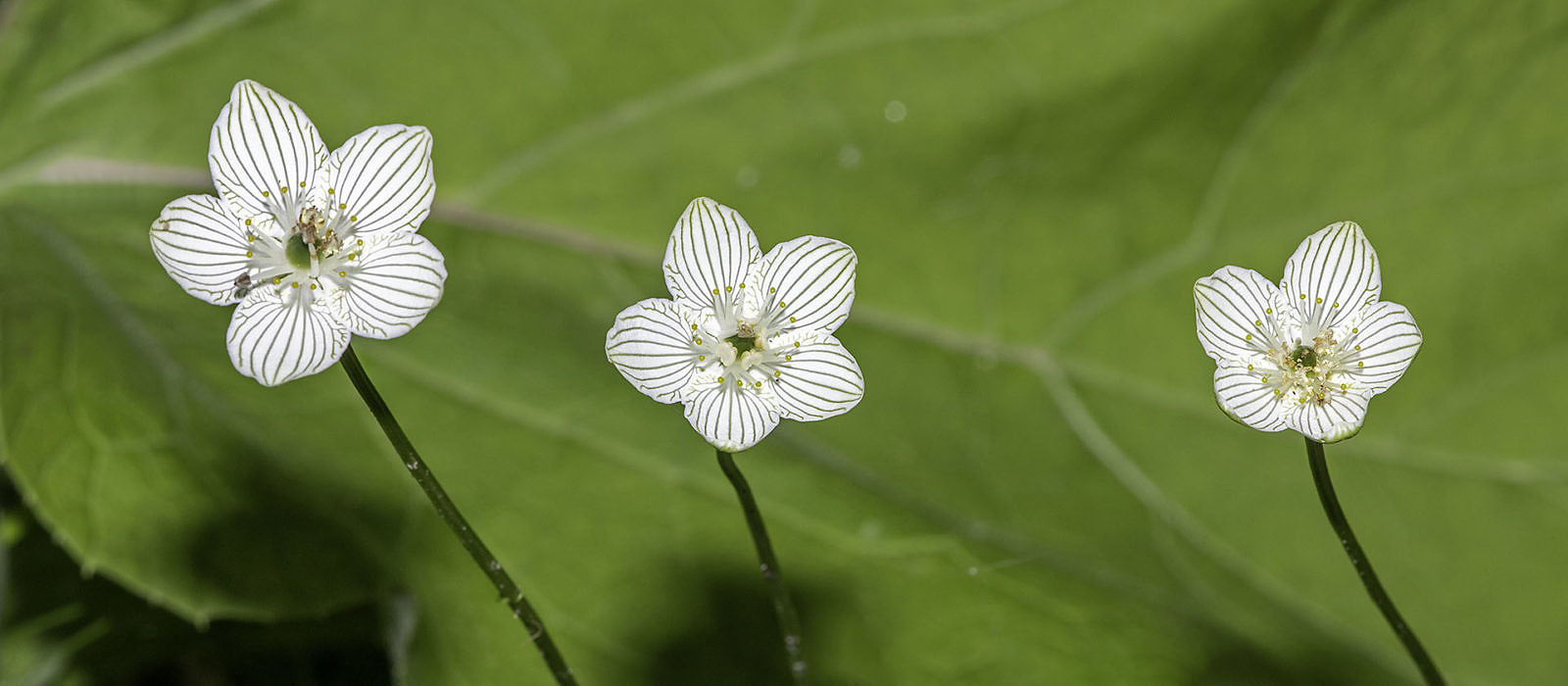
A Flower’s Reproductive Antics
A Celebration of How Fen Grass-of-Parnassus "Gets It On"
From our spot beside a trail in northeastern Vermont, it might have been easier to turn our attention to the charismatic: warblers calling from the canopy overhead, a rare bee nearby, or even a visit with orchids growing across town. Instead, we studied only the white flowers at our feet.
For two hours on a wet, summer day, my friend and colleague Grace Glynn and I did little more than sit in one place to discover, ponder, discuss and enjoy the antics of Fen Grass-of-Parnassus (Parnassia glauca). More to the point: we spent two hours understanding how this plant’s flowers have sex with one another.
Two hours. One place. One plant. I consider that an act of rebellion.
To be everywhere at once is to be nowhere forever. — Edward Abbey
Diversion and distraction are now human afflictions. Blame the internet in part. FOMO, fear of missing out, is defined as the feeling of anxiety owing to the belief that our friends, posting to social media from somewhere else, are doing something better than we are. “To be everywhere at once is to be nowhere forever,” Edward Abbey once wrote. Even nature can offer a kind of FOMO, particularly among birdwatchers, those listers who turn their gaze away from their bird in view toward notions of one better up ahead, toward the “what’s next.”
For Grace and me there was no what’s next. Fen Grass-of-Parnassus was enough. That’s because this plant is calculating and methodical in its game of reproduction (including how it welcomes that rare bee to its nectar rewards each autumn). So I will distill for you two hours of flower observation into about two minutes of reading:
Have a look at this first flower (Image 1 – click for a bigger view). I’ve labelled key parts: a pollen-producing anther sits atop a filament — together they constitute a stamen, five of which encircle a green pistil (barely visible), where fertilization happens. Those “staminodes” are modified stamens advertising nectar to potential pollinators.
Also know that most flowers do not mate with themselves. One way flowers prevent that kind of self-pollination is for their pollen and pistil to mature at different times. By contrast, in cross-pollination, one flower’s pollen fertilizes a mature pistil on another plant’s flower, which maximizes genetic diversity — a good thing in the struggle for existence.
Like many plants, Fen Grass-of-Parnassus relies on insects to carry its pollen from one flower to the next, luring bees and flies with the promise of nectar, with those green stripes (nectar guides) pointing the way. As an insect finds nectar at the base of each flower, it gets dusted with pollen (or gathers it in the case of some bees) before flying off to another bloom.
But Fen Grass-of-Parnassus plays a long game with its insects. Instead of producing pollen from all five stamens simultaneously, it issues pollen sequentially, one anther at a time (and probably one anther per day). Better yet, each anther goes to great lengths — literally — to touch its pollinators.
Note how the anther I’ve labelled above in Image 1 is elevated on its filament and arched over the pistil. It is the first of the five to make this extension — moving into position to more easily address a visiting insect with pollen (which has yet to emerge from that first anther). After a day or so in place, dishing out its pollen, the stamen will swing outward to make room for one of its brothers to take its turn directly over the pistil. This goes on sequentially until all five stamens have made the maneuver.
In Image 2 note how the fifth and final stamen (at about 4 o’clock) has arched itself over the pistil, with pollen still visible on its anther. The other four anthers, having already completed their mission, are brown and spent, their filaments extended and retracted toward the outer edges of the petals. All the while, that green pistil has not yet developed its stigma — the sticky portion that receives pollen before germination. No stigma, no self-pollination from those visiting anthers.
Finally, Image 3 shows a flower, late in the game. Its five stamens have completed their journeys. The staminodes remain, luring insects. But note that the green pistil — dead center — now sports a well-developed, four-parted, pale stigma, which will capture, at long last, pollen from a fly or bee visiting from some other Fen Grass-of-Parnassus plant.
So there you have it: a plant that methodically rearranges and synchronizes its reproductive parts — a kind of dance that Grace and I could not see in action, but could infer and understand over time.
No distractions: no email, no politics, no tweeting, no pandemic. Instead, only our hand lenses, our notebooks, a botany manual (Fernald 1950) and a few photos taken now and then so that we could bring this tale to you. Well, not only that. We also had the curiosity, exuberance, temerity and patience to do little more than sit beside a trail watching the flowers of Fen Grass-of-Parnassus going about their business of reproduction.
I can think of few better ways to spend two hours on a late-summer day.
Postscript: I had waited a year to watch this Parnassus performance. One year ago I visited with these same plants, but only to seek out one of their pollinators — a rare bee called Parnassia Miner (Andrena parnassiae), which I’m told had been rarely photographed alive on its favorite flower. Only when I wrote about the bee a year go did I learn from friend and botanist Steven Daniel about these anther antics. If you care to read last year’s post, you will not only learn about the bee and the flower, but also about a beetle that, having been swallowed by a frog, proceeds to crawl out the frog’s butt unscathed. (Okay, now THAT’S a worthy distraction.)
References and Notes for Botanists
- Armbruster, W. Scott, et al. 2013. In the right place at the right time: Parnassia resolves the herkogamy dilemma by accurate repositioning of stamens and stigmas. Annals of Botany. 2014 Jan; 113(1): 97–103. Published online 2013 Nov 20. doi: 10.1093/aob/mct261
- Fernald, M.L. 1950. Gray’s Manual of Botany: Eighth (Centennial) Edition — Illustrated.
- That paper by Armbruster above really helped us figure out these flowers (thanks, Steven!). Even so, Grace and I left the Parnassia patch with questions: Does each anther really position itself over the pistil for only one day? Does each stamen extend and position itself in a consistent, sequential pattern? Clockwise? Counterclockwise? We’ll be back next year to find out!
- Those staminodes are also intriguing. Fernald says they are nectariferous. It would seem that the yellow-green “globules” would be so. But we’ve read that their nectar source lies at their base. Another thing about the staminodes: there are five of them, equal to the petal and stamen count (and not 15 as might seem to be the case from my photos); it turns out each one of the five staminodes are three-parted, connate at their base, and extending into “little tridents whose prongs are topped with tennis balls” (my term, not official botanical parlance).
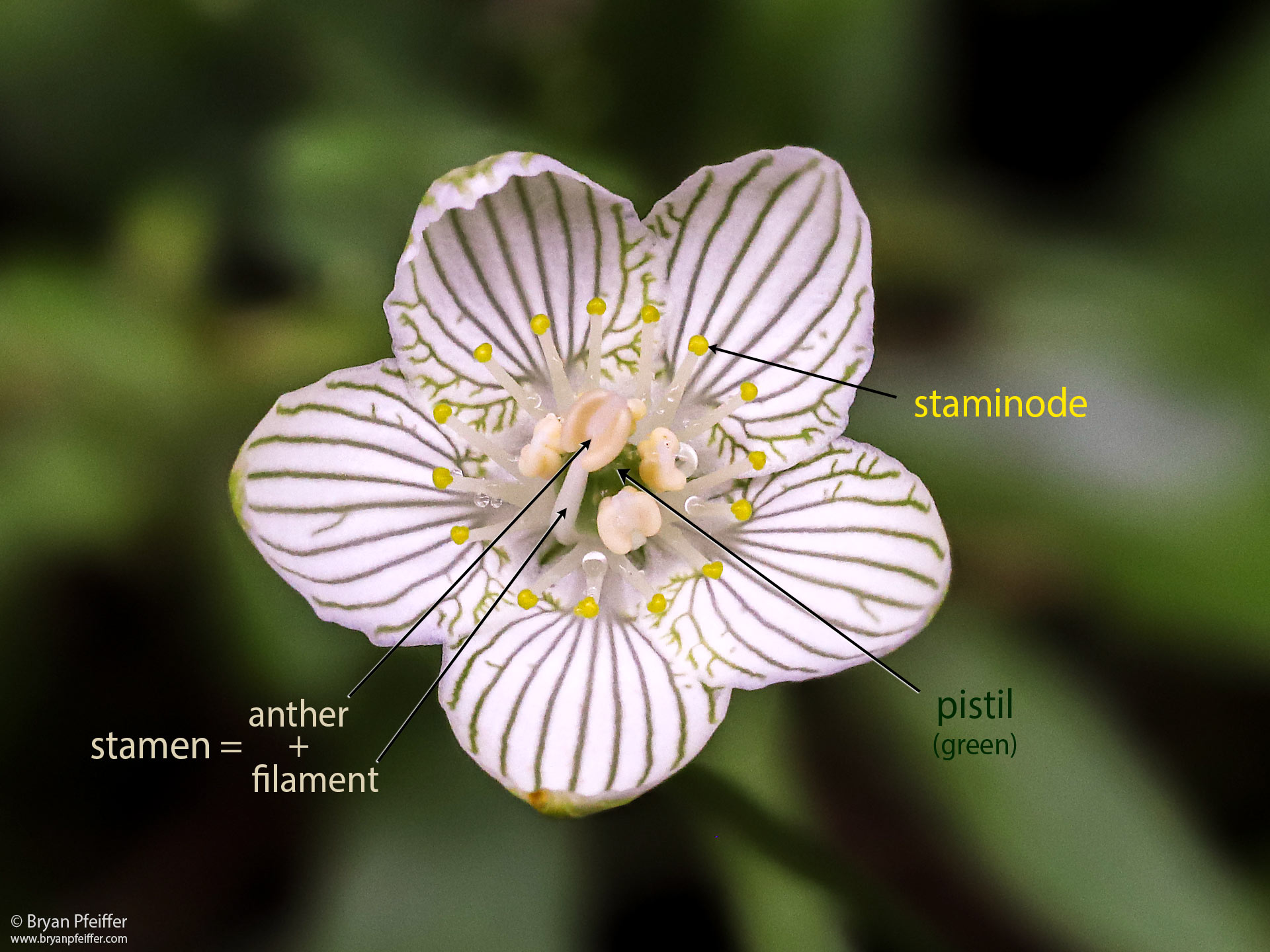
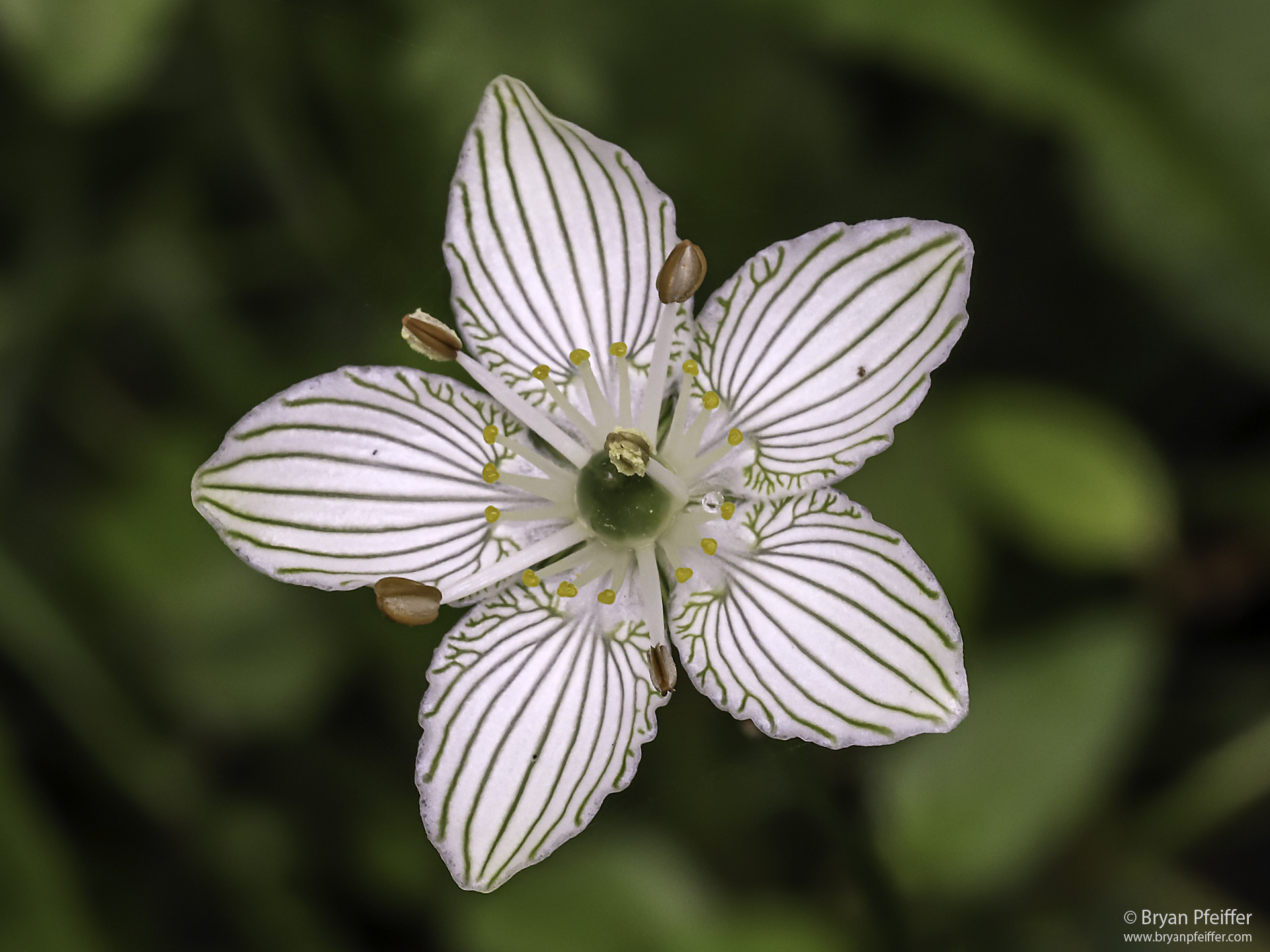
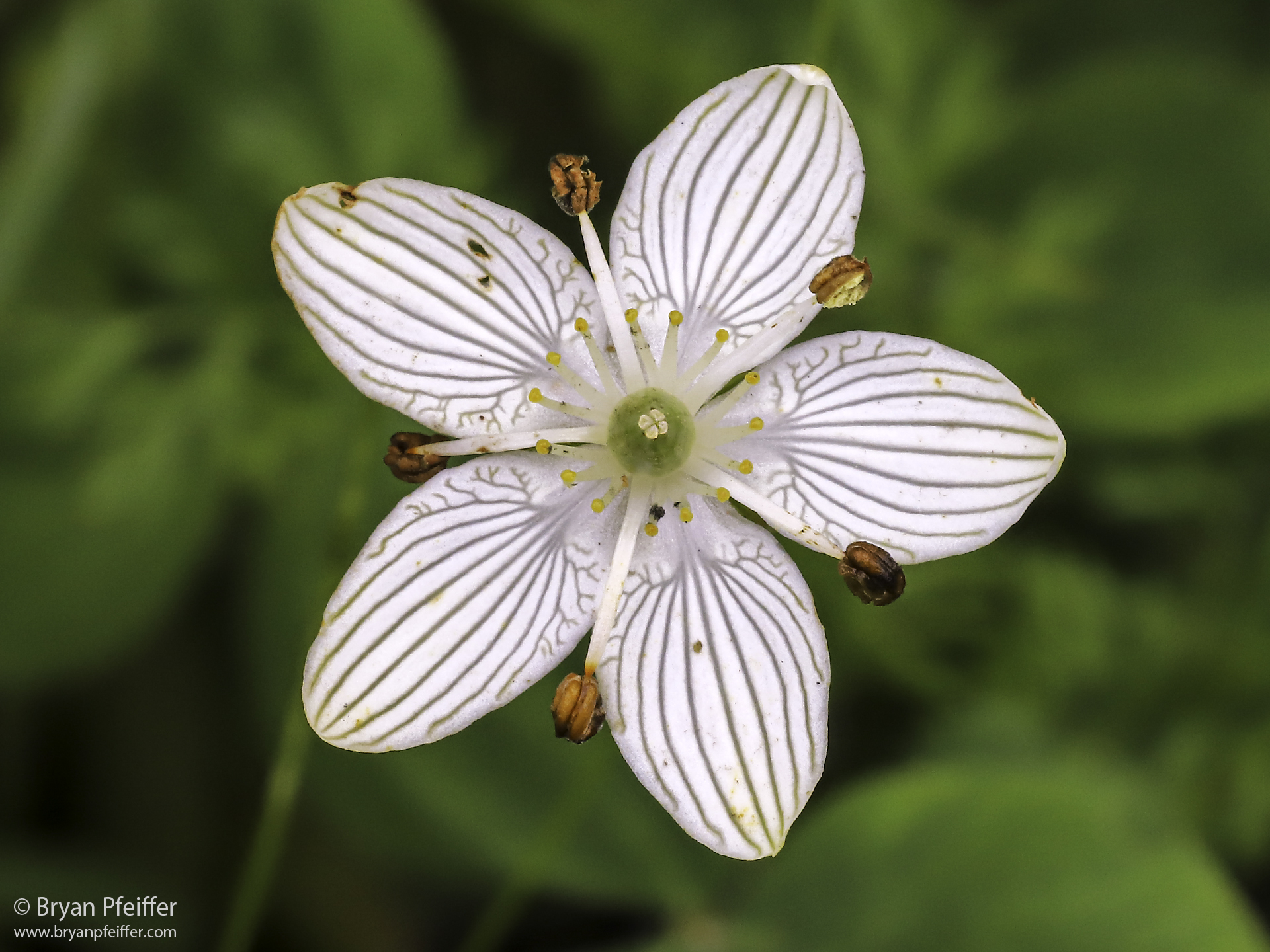
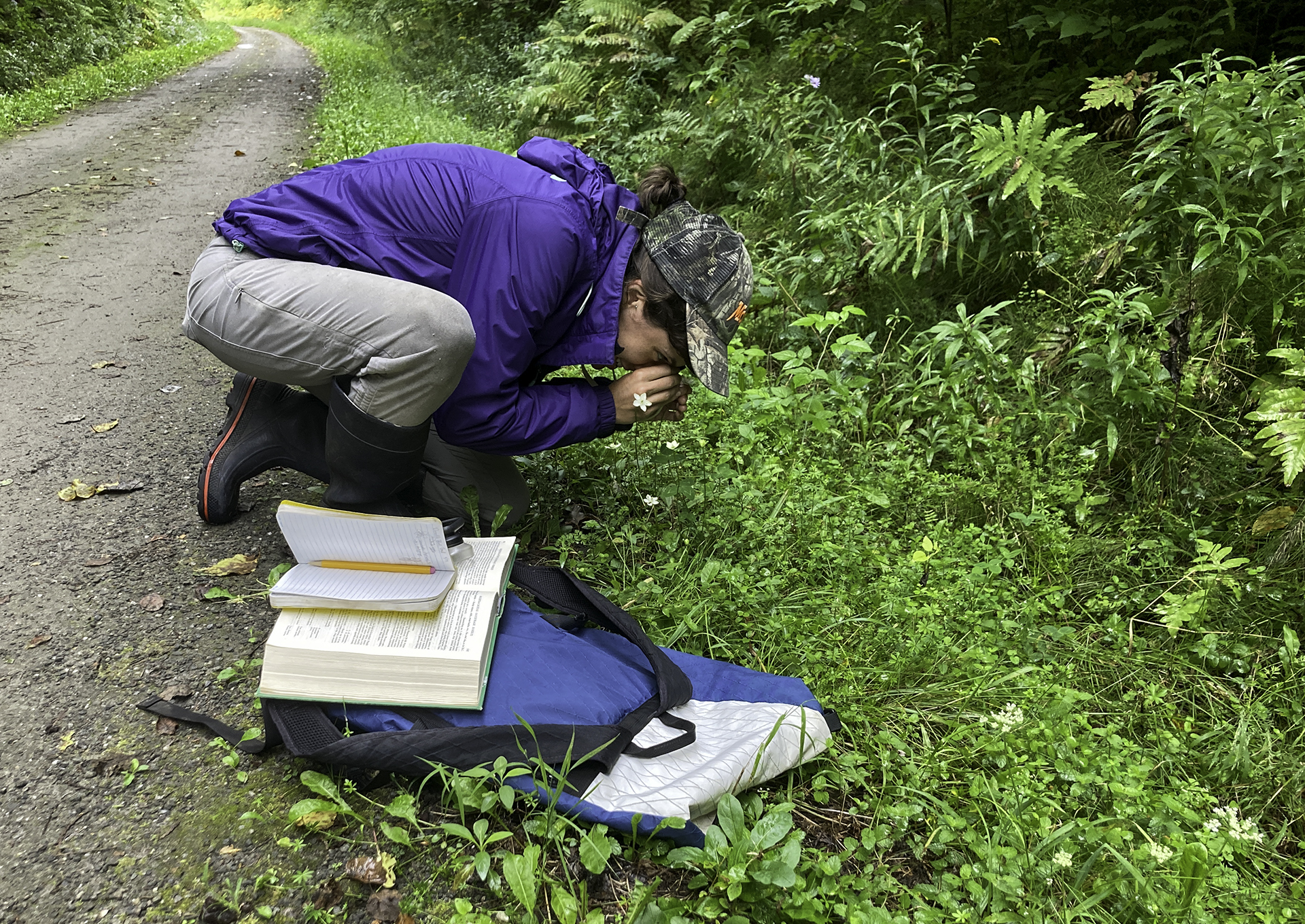
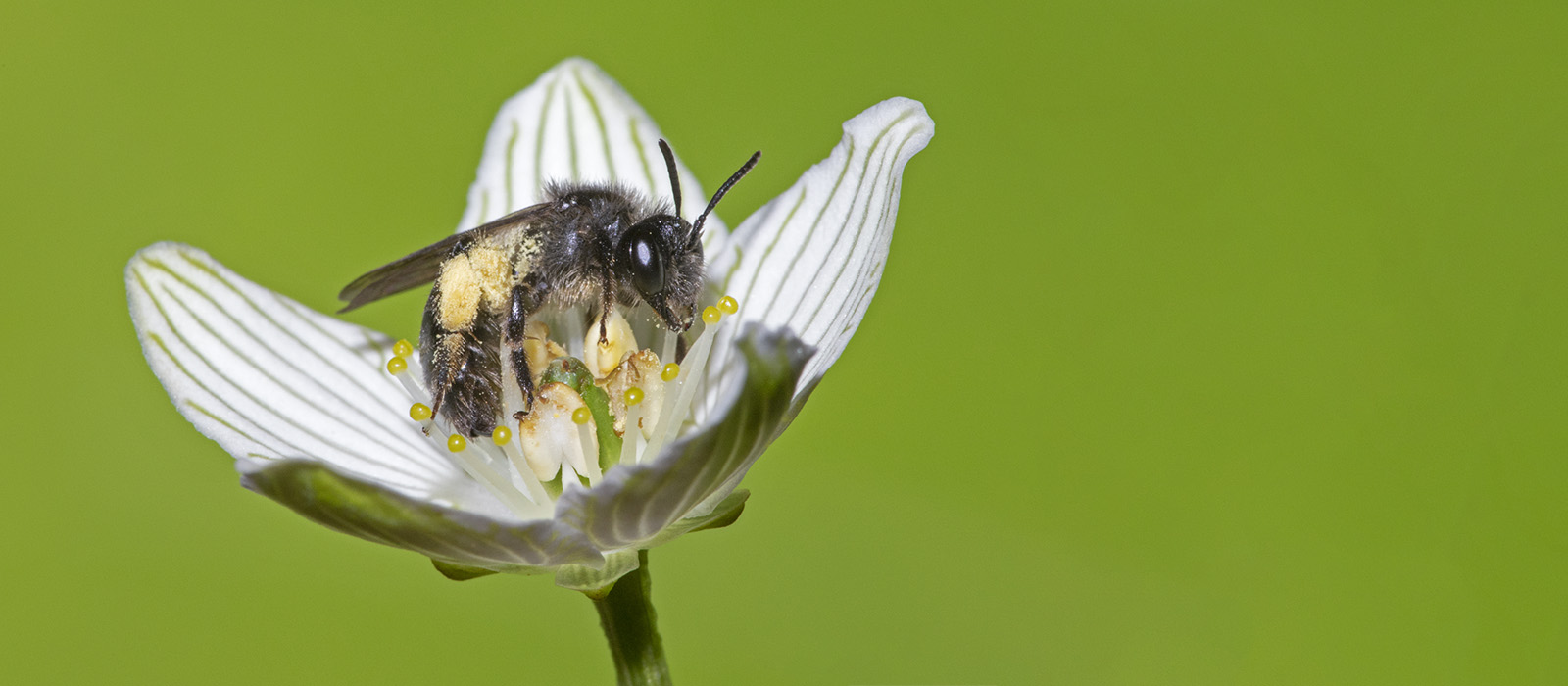

This is great. Thanks SO MUCH, Bob. I wasn’t aware of this genetic self incompatibility. Very cool. (I’ve been thinking about writing about heterostyly — it’s now on my agenda.) Thanks again!
Thanks, Fernando. Oh, yeah — time lapse is indeed in order. 🙂
Very nice, Bryan. I want to mention other mechanisms used by plants to ensure cross pollination.
Morphological: heterostyly, i.e. where flowers have stamens and styles of differing heights. But more interesting is genetic self incompatibility where there is a SI gene with many different alleles (forms) and pollen won’t germinate and grow down the style of a plant having that same allele for the SI gene. The interesting ramification is that the selective advantage of an allele is negatively related to its frequency in the population, so rarer alleles are at a selective advantage. See https://www.sciencedirect.com/topics/medicine-and-dentistry/self-incompatibility
Super interesting, Bryan! Great description and photos. I think that a timelapse photography project is in the to do list for next year!
I hope to watch more action — day after day — next year. Thanks, Elaine.
I really do love those flowers, Sue — even before I knew about their pollination antics. 🙂
They really are lovely flowers. I hope you two get to see them some late-summer or fall.
You are most welcome, Priscilla.
Trying to be like you, John! 🙂
very interesting site, play by play!
I thoroughly enjoyed this educational piece today, Bryan, right to the bitter end where the beetle crawled out of the frog’s butt which I had not seen last year! Very cool information! What a mindful way to spend a couple of hours…sounds so peaceful and calming!
Thanks, Bryan for sharing another beautiful Nature lesson and illustrating it with your amazing photographs. You’ve introduced us to another miracle by telling us about the Fen-Grass-of-Parnassus, something we probably never would have experienced on our own.
This is great!!! Thanks for sharing!
Thanks, as always (really!), for taking the time to both see and share.
You’re my hero and inspiration, Steven!
Thanks, Meena!
Yeah, we’re lucky, Remy: something new out there in nature all the time!
You’re most welcome, Janet. Thanks for reading!
Yeah, let’s hope we’ll see each other in person for that Audubon meeting!
You found our patch! 🙂
Thanks, Rita. Yeah, what a world, indeed!
I agree — they are indeed one of the prettiest flowers around!
Ah, Steve, I hope you can get out in the field one day with Grace. The two of you are amazing botanists on whose coattail the rest of us joyfully ride. And of course, Bryan, your coattails always take us to amazing places macro and micro!
Right on time again, you are. Had a date with a field of these last week, but failed to delve deep like you and Grace. They are one of the prettiest flowers around, and now I know, they are clever to boot. Thank you my dear naturalist buddy.
Quite amazing Bryan and wonderful pictures on top of the fascinating explanations. I am in awe pretty much all of the time these days, what a world! Thank you.
We just saw some of these flowers along the rail trail from Danville to St. Johnsbury. Really fun to get this info about them today!
How nice of you to take us away from mowing lawns with your always informative and fascinating emails Bryan.
Warren King told me you’ll be speaking at our annual Audubon Meeting so will hope to see you then.
Sarah and Dayton
An excellent post that I was happy to focus on for more than a few minutes. I learned quite a bit about the Fen Grass-of-Parnassus and how it reproduces plus a reference to the rare bee that frequents this plant. Thank you, Bryan!
This was so fascinating. The photos are just fabulous. Thank you for teaching me something new!
Loved it!
Great piece, Bryan! Only you would be sure to not let this rest for a full year until you could go back and investigate for yourself. And now with some questions answered and new ones to further study. A very fine naturalist you are!